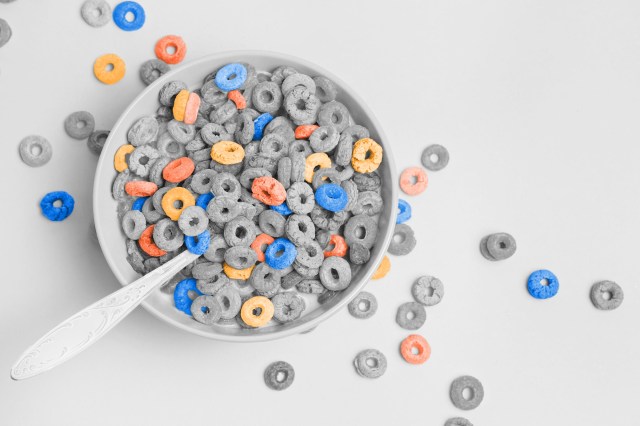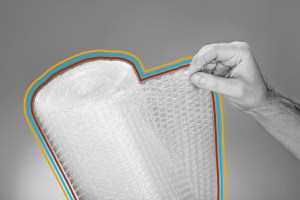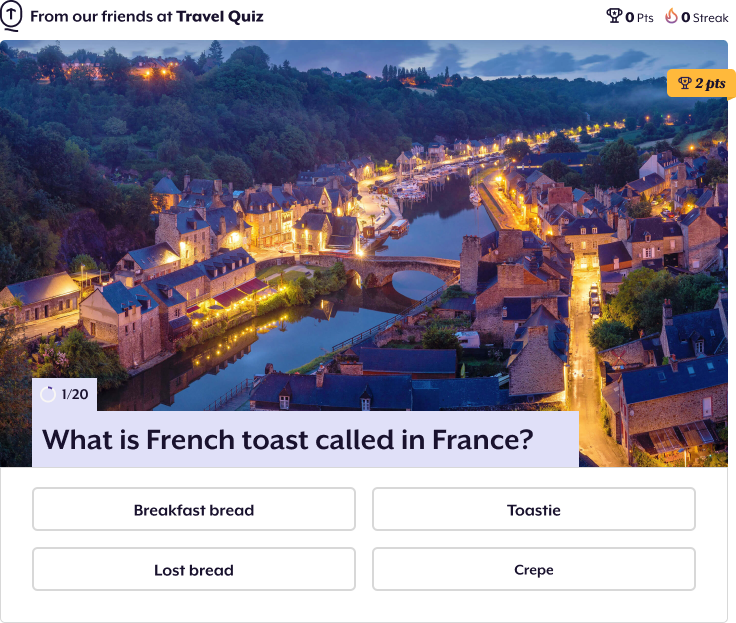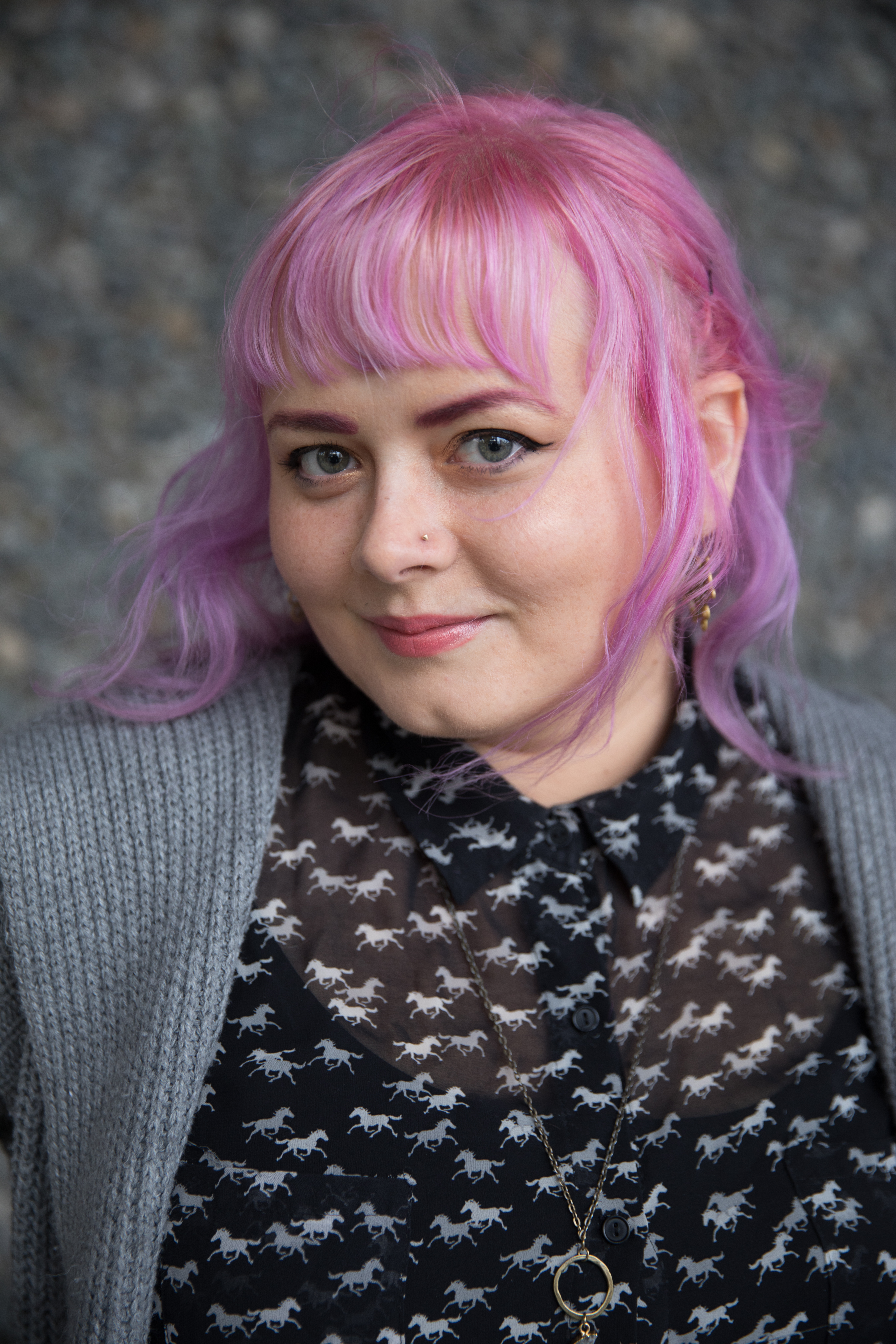
The First Cereal Prize Was (Probably) a Book
Prizes included with boxes of sugary cereals used to be a mainstay of product marketing. Notable examples include cheap plastic toys, baseball cards, and even a video game on CD-ROM — a Doom mod called Chex Quest.
What’s likely the earliest example was a little more literary, though. That honor is usually given to Kellogg’s, which offered a book to customers who checked out at the grocery store with two boxes of Corn Flakes in 1910. The book, The Funny Jungleland Moving Picture Book, featured horizontal flaps that could be moved to create different pictures and stories.
Prizes started appearing inside cereal boxes in the 1920s, when Malt-O-Meal began packaging whistles at the bottom of the box.

Cheerios Used to Be Called Cheerioats
There are few, if any, cereals more iconic than Cheerios, but if you thought the name came from their round shape, you’d be mistaken. When the brand originally launched in 1941, they were called Cheerioats. In 1945, Quaker Oats claimed that it had exclusive rights to “oats” for its oatmeal — laughable in today’s oat-heavy market — and General Mills dropped the “at” from the end of the name. As of 2018, Cheerios is the bestselling cereal in the United States (just above Honey Nut Cheerios in second place), so General Mills really came out ahead in the end.

Some Common Cereal Is Magnetic
It’s incredibly common for cereal to be fortified with extra vitamins and minerals, including iron. Just like any other iron — whether it’s in a skillet or a fence — the iron added to breakfast cereal is magnetic. Cereals with a lot of iron in them (like fortified cornflakes) even react to magnets when they’re floating in liquid. While the iron in some whole cereal is enough to be magnetic on its own, for a more in-depth, science fair-style experiment, you could try crushing up cereal and seeing how much pure iron you can pull out of it.
More Interesting Reads

Froot Loops Are All the Same Flavor
The O’s of Froot Loops come in a variety of fruity colors, as if they each represent a different fruit flavor. However, the color is the only real difference between those O’s, because the flavor is the same throughout the box. You may still taste a difference between the colors, but it’s probably because your vision tells you to expect something different.
Speaking of fruity misconceptions, it’s always been spelled “Froot Loops” — contrary to a popular belief that the name changed because of a lawsuit over the cereal’s lack of real fruit.

Tony the Tiger Beat Other Animals to Become the Frosted Flakes Mascot
Imagine for a second that the Frosted Flakes slogan isn’t “they’re grrrrrreat,” because the mascot is not a tiger, but a kangaroo, and the kangaroo makes more of a coughing sound. When Kellogg’s launched Frosted Flakes in 1952, it experimented with several mascots — including Katy the Kangaroo, Elmo the Elephant, and Newt the Gnu — to see which one would be more popular with consumers. Tony turned out to be more popular across demographics, and Katy, Elmo, and Newt are now just distant memories.

Pink Hearts Are the Only Original Lucky Charm Marshmallow Left
If you haven’t had Lucky Charms since you were a kid, you may be in for a surprise, because General Mills makes adjustments to its lineup every so often. With a whopping eight marshmallow shapes (they’re called “marbits”) in today’s cereal, when a new one comes along, another steps out. But Lucky Charms launched in 1964 with just four marbits: green clovers, pink hearts, orange stars, and yellow moons. Now the moons are blue, the stars are yellow-and-orange shooting stars, and the green clovers are part of a hat. The pink hearts are the only ones that remain close to their original form.
Other shapes have come and gone completely, like the blue diamond, pot of gold, crystal ball, and green tree. The most recent addition is the purple unicorn, which replaced the hourglass.

Michael Jordan Has Appeared on More Wheaties Boxes Than Anyone Else
Wheaties, aka the Breakfast of Champions, has existed since 1924 and has featured athletes on its boxes since 1934; Lou Gehrig was the first. Over 90 years of sporty branding, there have been a few repeats, but Michael Jordan has graced the front of the box the most, at 19 times over 30 years. The five-time NBA MVP and Space Jam star most recently appeared on a box design commemorating the cereal’s 100th anniversary.

There’s a Secret Fourth Rice Krispies Elf
Everybody knows about elves Snap, Crackle, and Pop, named for the sounds the cereal makes when it mingles with milk. The trio have been promoting Rice Krispies in one form or another since the 1930s, starting with Snap as a solo act, before Crackle and Pop joined him in 1941. But few remember the fourth cereal brother, a nonverbal space-elf named Pow, who appeared for a very brief time in the early 1950s. He appeared in only two commercials, riding a hovercraft and drawing attention to the cereal’s “power from whole grain rice.” According to Kellogg’s, he was never meant to be an “official character.”













